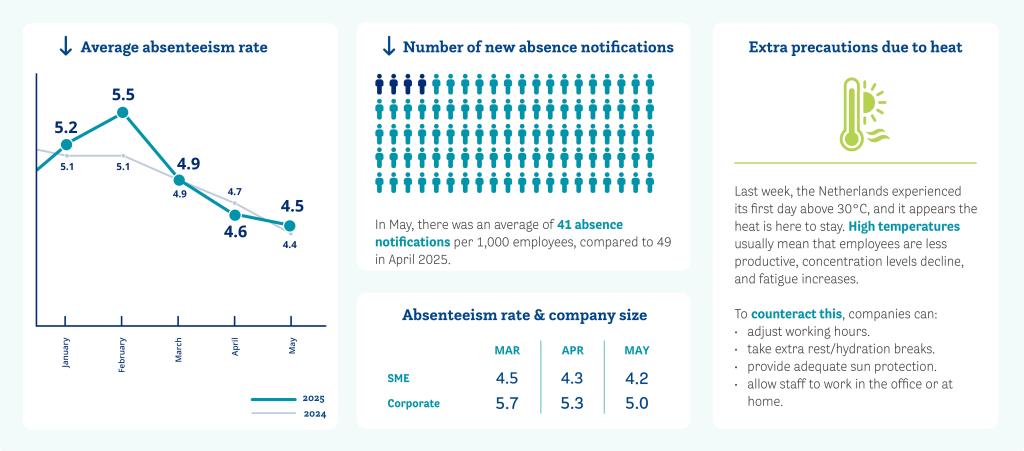The Dutch workforce is preparing for summer: temperatures are rising and absences are falling

Less flu, more holidays
“Every year, we see the absenteeism rate drop in the run-up to summer,” explains Iris Homeijer, Occupational Physician and Director of Medical Affairs at HumanCapitalCare. “Not only do flu cases start to fade away, but the May holidays and other holiday leave taken by employees outside the peak season also coincide with this period.” Alongside the absenteeism rate, the number of new absenteeism reports also fell from 49 in April to 41 per 1,000 employees in May.
Extra precautions due to heat
Whereas absence drops during this time of year, temperatures are on the rise. Last week, the Netherlands experienced its first day above 30°C, and it appears the heat is here to stay. “Many people enjoy the warmth and sunshine, but this can call for extra precautions in the workplace when it comes to employees and their work activities,” says Homeijer. High temperatures generally mean that employees are less productive, their ability to concentrate declines, and fatigue increases. “This can pose additional risks, especially in professions where concentration is essential for safety, such as in the transport sector. Certain groups of people are also particularly sensitive to heat, such as employees who are pregnant, those with lung or heart conditions, or people taking medication for high blood pressure.”
Simple adjustments to help keep your cool
Under the Working Conditions Act, employers are obliged to ensure a safe and healthy work environment, including during periods of high temperatures. Although there is no legally prescribed maximum temperature, it is important for organisations to establish clear agreements here. Homeijer: “You can achieve a lot with relatively simple measures. This could include introducing a summer work schedule with adjusted working hours and the option of taking additional breaks. It is also important for employees to have enough to drink and, where possible, you can also adjust the dress code. When working outdoors, it is essential to provide adequate sun protection, including shade, head covering and sunscreen. Finally, depending on the situation, you can offer employees the option of working either from home or at the office on extremely hot days. Employers who need advice in this regard can always contact their occupational health and safety service provider. By establishing measures in a hot weather plan, organisations ensure that they are not only prepared for summer 2025, but also for the summers beyond.”